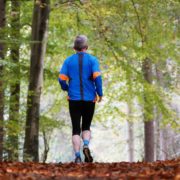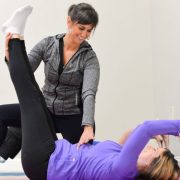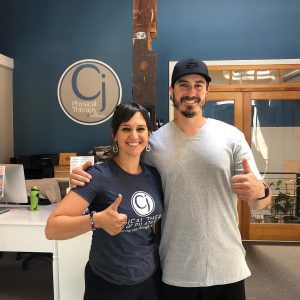Knee Pain while Running? Don’t Blame Arthritis
Knee Pain while Running? Don’t Blame Arthritis
Is running bad for your knees? Does it cause arthritis?
We get asked these questions a lot, especially by clients who are in their 50s and 60’s and wondering if it’s safe to keep running.
The short answer is no — running is NOT bad for your knees! If you experience knee pain while running, it’s not that you’ve “aged out” of the sport or that it’s causing arthritis in your knees. This is a very common misconception. In fact, research supports that running may actually be GOOD for your knees!
Staying strong, active, and mobile is your best defense against osteoarthritis.
Therefore runners, because they are typically active and healthy individuals, often have healthier knees compared to non-runners.
Ok then — so if not arthritis — what really causes knee pain in runners?
In most cases, it’s simply a biomechanical issue that goes unaddressed over time. But the GOOD news is that once identified, these issues can actually be fixed with proper education and strengthening (best offered by movement specialists like us!).
Here are three of the most common factors we see that cause knee pain while running:
1) Poor ankle mobility
Ankle mobility affects the way force hits your foot, which can impact your knee. If your ankle doesn’t move fully, freely, and adequately, excess forces will be shifted up to your knee. The knee may be forced to flex, rotate, and/or tilt more than it needs to. This, in turn, may result in unwanted loads that the tissues of the knee can’t handle. An expert in biomechanics and movement can not only help you identify if this is the true root of your “knee problem,” but can also help you improve your ankle mobility. This will help prevent long term damage to the joints, tendons, and ligaments in your knees. We actually see this as a very common problem. Specifically, in those that have sprained or twisted their ankles in the past. If that’s you, this could be a reason why you’re suffering from knee pain while you run.
2) Weakness in your hips and thighs
There’s a widely perpetuated myth out there that runners don’t need to strength train. That’s simply not true! Adding strength training to your running regimen makes it way less likely that you’ll suffer an injury. When it comes to protecting your knees, developing good, balanced strength in your hips and thighs is critical. The hamstring and quadriceps muscles play a crucial role in stabilizing the patella, otherwise known as your kneecap. Since running is extremely repetitive on your joints, especially your knees, it requires they have good durability and endurance — something that is lost quickly when you neglect proper strength training. Often “wear and tear” in your knees (otherwise known as arthritis) will get blamed for your knee pain when in actuality, the loss of strength around your knees is what’s causing that wear and tear to feel worse than it needs to.
3) Unstable core
It may seem like running is all in the legs, but the stability of your pelvis and trunk have a huge influence on how your legs perform. You derive the majority of your power, speed, and stamina from your core muscles and glutes. Much like with ankle mobility, if your core is not performing adequately or efficiently – your legs will have to work harder. A stable core is key for developing and maintaining good balance and rhythm with any activity – but especially running.
With a repetitive activity like running, efficiency and form is everything. Without a strong core, it’s impossible for your leg muscles and knee joints to work as efficiently as they were designed to. It will be really difficult for you to maintain good and proper running form. When your core strength is weak, and doesn’t have enough endurance to sustain the amount of miles you want to run, your knees will suffer.
What’s important for you to remember is that arthritis is NORMAL — everyone gets it as they age.
What doesn’t have to be “normal” is for arthritis to stop you from running, or doing any other activity that you love. You can get surgery to fix the “wear and tear” in your knees, or injections to decrease the inflammation, but if you don’t check and address any underlying biomechanical issues, these fixes will be temporary and your knee pain will keep coming back. And worse… they could force you to stop running all together!
If you’re local to Portsmouth, NH and suffering from knee pain that’s starting to impact your ability to run or do any other activity that you love, you might want to consider speaking to one of my specialists.
In this FREE Discovery Session you can tell us everything that’s been going on with you, and determine for yourself if we’re the best people to help you. It’s a completely free, no-obligation appointment that will give you all the information you need to make the BEST decision for YOUR health – whether that’s working with us or not!
CLICK HERE to request a free discovery session.
Dr. Carrie Jose – back pain specialist and Pilates expert – owns CJ Physical Therapy & Pilates in Portsmouth, NH.





